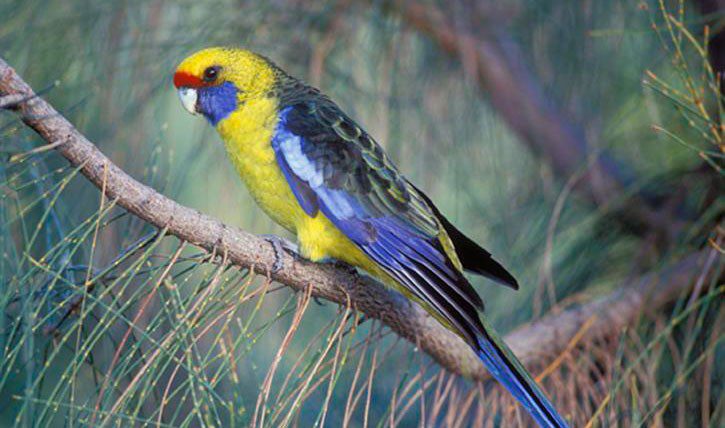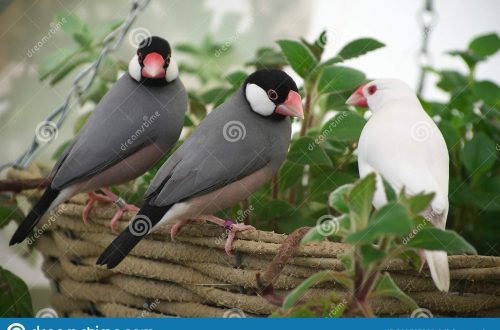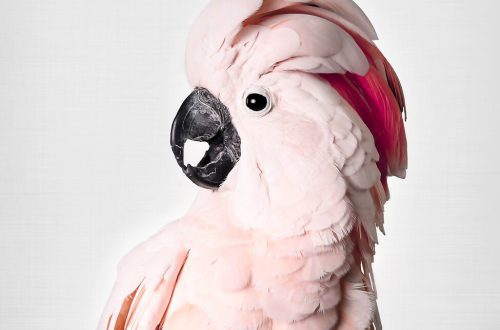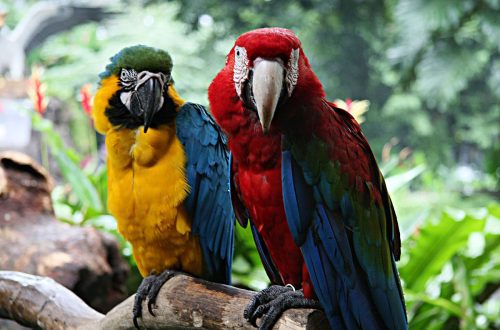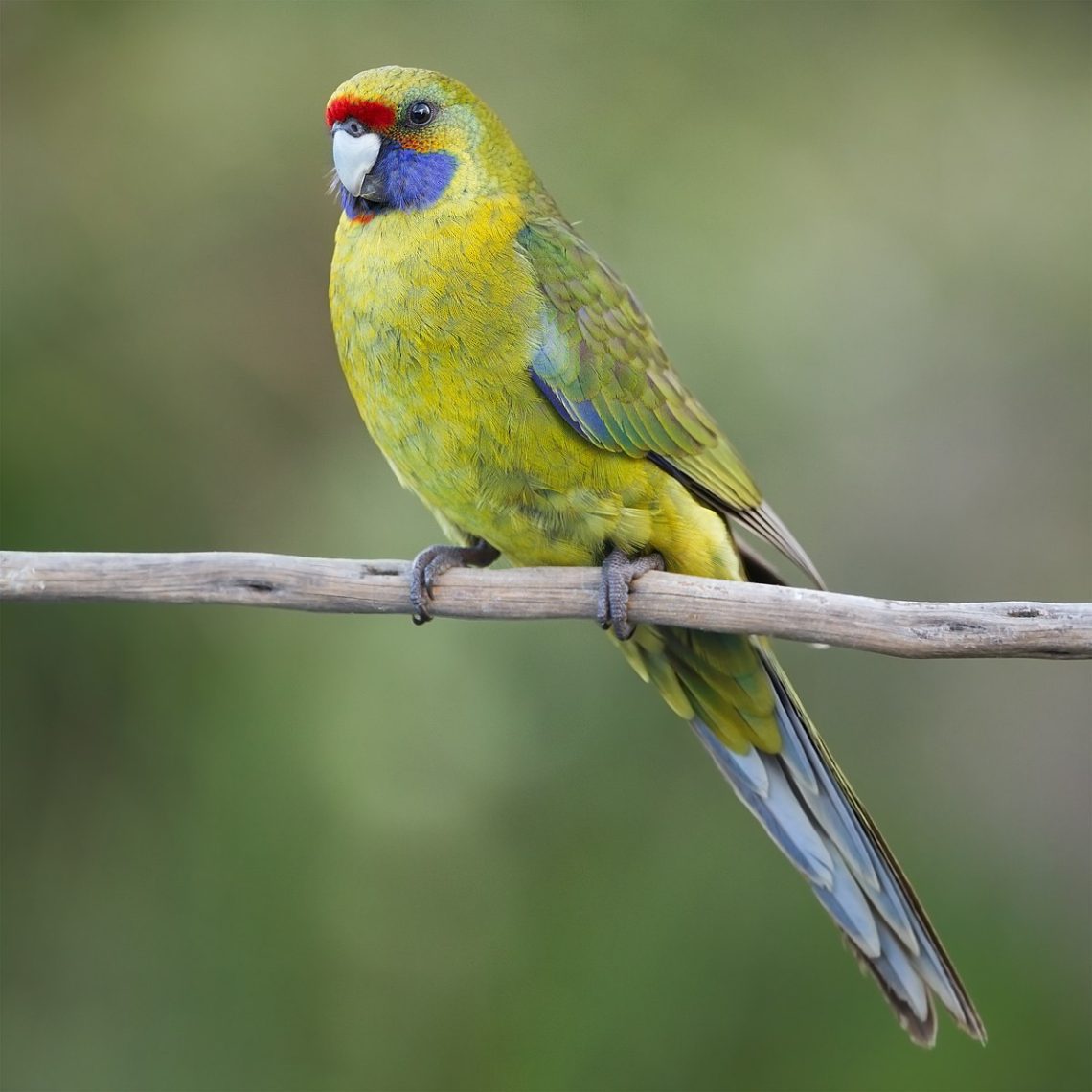
Green Rosella
Green Rosella (Platycercus caledonicus)
| Order | Parrots |
| family | Parrots |
| Race | Roselle |
APPEARANCE
A medium-sized parakeet with a body length of up to 37 cm and a weight of up to 142 g. The body is knocked down, the head is small. The beak, however, is quite massive. The color of the plumage is very bright – the back of the head and back are brown, the shoulders, flight feathers in the wings and the tail are deep blue. Head, thorax and belly yellowish-green. The forehead is red, the throat is blue. Sexual dimorphism is not typical in color, females differ slightly – the color of the throat is not so intense. Usually males are larger than females in size and have a larger beak. The species includes 2 subspecies that differ in color elements. Life expectancy with proper care is 10-15 years.
HABITAT AND LIFE IN NATURE
Green rosellas live in Australia, on the island of Tasmania and other islands in the Bass Strait. They usually live at altitudes up to 1500 m above sea level. They prefer lowland forests, thickets of eucalyptus. They are found in mountain, tropical forests, near the banks of rivers. These parrots can also be found near human habitation – in gardens, fields and city parks. An interesting fact is that the domesticated green rosellas that flew away from the owners formed a small colony near the city of Sydney in Australia. Outside the breeding season, they usually keep in small flocks of 4 to 5 individuals, but sometimes they stray into larger flocks, including other types of rosellas. Usually, partners keep each other for quite a long time. The diet usually includes grain feed – grass seeds, tree fruits, berries, and sometimes small invertebrates. Usually, when birds feed on the ground, they behave very quietly, however, when sitting in trees, they are quite noisy. When feeding, they can use their paws to hold food. Previously, the natives ate the meat of these birds, later they saw enemies of agriculture in green rosellas and exterminated them. At the moment, this species is quite numerous and of all types of rosella causes the least fear of extinction.
BREEDING
The breeding season for green rosellas is September – February. Birds usually nest when they are a few years old, but young birds may also attempt to mate and search for nesting sites. This species, like many other parrots, belongs to the hollow nests. Usually a hollow is chosen at a height of about 30 m below the ground. The female lays 4-5 white eggs in the nest. Incubation lasts about 20 days, only the female incubates, the male feeds her all this time. And at the age of 5 weeks, fledged and completely independent chicks leave the nest. Their parents still feed them for several weeks.



